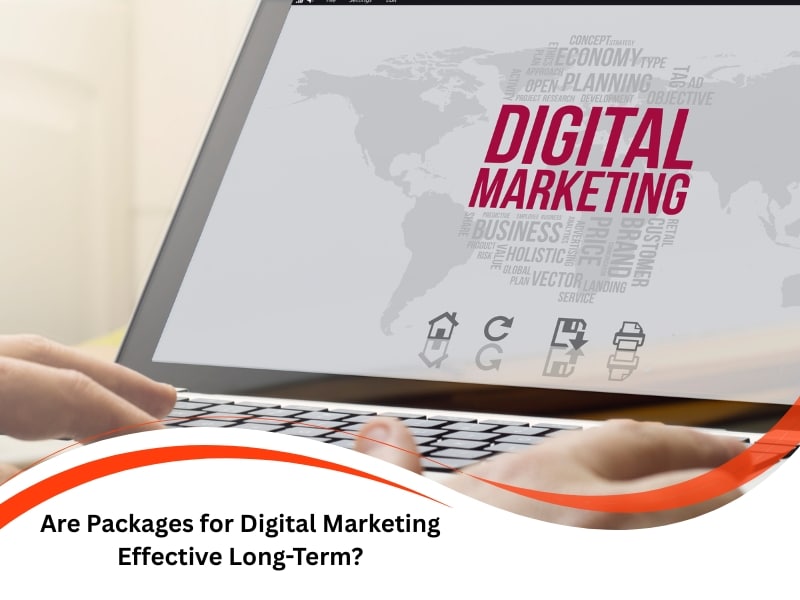Packages for digital marketing often appeal to business owners seeking reliable and budget-friendly solutions. With so many services to manage — from websites to ads to analytics — bundled packages promise simplicity and structure. But do they offer long-term value, or do they fall short when your business starts to grow? Small and medium-sized businesses across Australia face common hurdles, including limited time, unclear return on investment (ROI), and numerous competing strategies. A good marketing package should alleviate those pressures, not exacerbate them. This article breaks down the pros, cons, and best-fit options for digital marketing packages, tailored for business owners like you.
What’s included in packages for digital marketing?
Most digital marketing packages combine several core services into a single plan. Here’s what typically comes with it:
- Website support: Updates to layout, speed, or mobile optimisation to enhance user experience. Strong web foundations mean better conversion and engagement. Many packages include ongoing updates to align with mobile-first browsing habits and best practices for user flow, and some also offer white label website design that can elevate your brand.
- Search engine optimisation (SEO): On-page fixes, keyword targeting, and ongoing content to improve Google visibility. SEO also often includes metadata adjustments, internal linking, and structured data to optimise local search results.
- Advertising management: Google Ads campaigns including Shopping, Display, or local targeting setups. Packages often handle bid optimisation, A/B ad testing, and keyword filtering to reduce wasted spend.
- Reporting and analysis: Basic monthly reporting to monitor traffic, engagement, or lead quality. Some offer more advanced analytics, including funnel tracking or call attribution, to connect leads with real business outcomes.
Some bundles fall short by skipping deeper strategy or customisation. That’s why it pays to discover top-rated packages for digital marketing services built around real business goals. Good packages help you focus on what you do best — running your business.
How do these packages support small business growth?
Digital growth isn’t about speed — it’s about choosing the right digital marketing packages that scale with your business goals. Quality packages support this through:
- Recurring service delivery: Consistent outputs, such as blogs, ads, or SEO updates, help maintain momentum. This regularity helps avoid the feast-or-famine cycle that many small to medium-sized businesses (SMBs) face when marketing is done ad hoc.
- Channel coordination: Services like SEO, PPC, and social media are aligned to reinforce each other. A campaign might start on Google Ads, followed by a remarketing ad on social media or a blog post to capture inbound interest.
- Clear timelines: Predictable schedules help avoid gaps in visibility or content. Weekly content drops or monthly strategy sessions give business owners peace of mind and trackable progress.
- Integrated analytics: Insights from platforms like Google Analytics or Search Console feed back into strategy. These analytics guide where to double down and where to pull back, saving both time and money.
Still, packages that lack room to evolve can limit results over time. Businesses serious about growth often start by customising your digital marketing package to fit shifting priorities. Your growth path deserves more than a copy-paste plan.
Why customise your packages for digital marketing?
No two businesses operate the same, even within the same industry. That’s why customisation matters.
- Goal-based targeting: Choose whether you want brand visibility, local leads, or more sales, and build around it. For example, a local café might want to attract foot traffic. In contrast, a service provider wants to receive calls and emails.
- Geographic focus: Add location-based SEO or localised ad campaigns to stand out in places like Sydney. If you’re targeting a metro area, specific suburb mentions and location landing pages matter.
- Flexible budgets: Allocate more towards SEO or PPC depending on current trends or business priorities. A seasonal spike may call for higher ad spend, while off-seasons focus more on evergreen SEO.
- Reporting that matters: Focus on metrics like leads, conversions, or phone enquiries — not just traffic. Tailored dashboards can also identify customer journey bottlenecks, highlighting where users drop off and what needs to be addressed.
One-size-fits-all packages rarely support unique growth goals, which is why tailoring matters. If content is your focus, begin by understanding content marketing strategies for business growth to shape what gets built into your plan. Customisation means better results without the waste.
Which KPIs show results from a digital marketing strategy?
Not all metrics mean something. Here are the key performance indicators that actually tell you whether a package is working:
- Lead volume and quality: How many people contact you, and how many are a good fit? High-quality leads reduce your cost-per-sale and increase client lifetime value.
- Organic search growth: Is your business showing up for the terms people are searching in your area? Rankings for relevant long-tail and local keywords usually deliver stronger, ready-to-buy traffic.
- Website engagement: Are people staying on your site, clicking through, or calling your business? Pages with low bounce rates and high scroll depth often signal trust and user satisfaction.
- Conversion tracking: Whether through forms, calls, or bookings — what action are users taking? The closer a KPI ties to a business action, the more it should matter in your strategy. Here’s a quick table for reference:
| KPI Focus | Example Metric | What It Shows |
| Visibility | Local SEO ranking | Your place on Google |
| Engagement | Bounce rate, time on page | User interest |
| Action | Call clicks, form submissions | Conversions |
| Efficiency | Cost per lead (PPC) | Return on ad spend |
Focusing on the wrong KPIs can hide underperformance, so review results against tangible business outcomes, not vanity stats.
Can these marketing plans adjust to changing trends?
What worked last year may not be effective today. A package that lasts long-term must include space for updates and trend shifts.
- Adaptable formats: Add video SEO, mobile-first design, or graphic design updates as needed. Visual trends and platform updates make design refresh cycles more critical than ever.
- Google-friendly tactics: Keep up with changes to search algorithms or ad platform rules. Packages that include monthly technical audits catch site errors early, before they negatively impact rankings.
- Flexible scheduling: Room to push seasonal promotions or limited-time campaigns. For instance, a Sydney-based retailer can pivot fast for back-to-school or end-of-financial-year sales.
- Content rotation: Swap out blog topics or ad creatives based on what your audience responds to. Dynamic content testing helps increase engagement and lower ad costs.
Across Australia, effective business growth strategies are built on adaptability. Packages that stay static are bound to slow you down. Long-term growth needs marketing that evolves with your audience.
What should you consider before choosing a package?

Before you commit to anything, review how well a package aligns with your business reality, not just the pitch.
- Scope of services: Does it include essentials like SEO, website edits, Google Ads, and social posts? Some packages also offer optional add-ons, such as email campaigns or graphic design, for a more comprehensive experience.
- Reporting frequency: Will you see what’s working each month or only at the end of a quarter? Monthly reports with commentary make a huge difference in clarity and course correction.
- Contract terms: Is there room to change focus or pause services without penalty? Flexible agreements allow SMBs to navigate cash flow dips or seasonal slowdowns.
- Scalability: Can this package grow with your business, or will you outgrow it in six months? Ask whether the package allows for extra campaigns, more channels, or higher ad spend without starting from scratch.
Committing to a static package without clarity on outcomes can cost you time and momentum. For smarter results, explore packages that align with your goals and build from there.
Final thoughts
Digital marketing packages work best when they’re built to fit. For SMBs across Australia, they provide structure, speed, and simplicity — but only if they’re flexible enough to adapt. Packages aren’t shortcuts — they’re frameworks. When done well, they take pressure off your plate and deliver results across SEO, PPC, design, and analytics. For a tailored plan built around your goals, timelines, and budget, consider exploring how Nifty Marketing Australia can help grow your brand with digital strategies that make sense.


